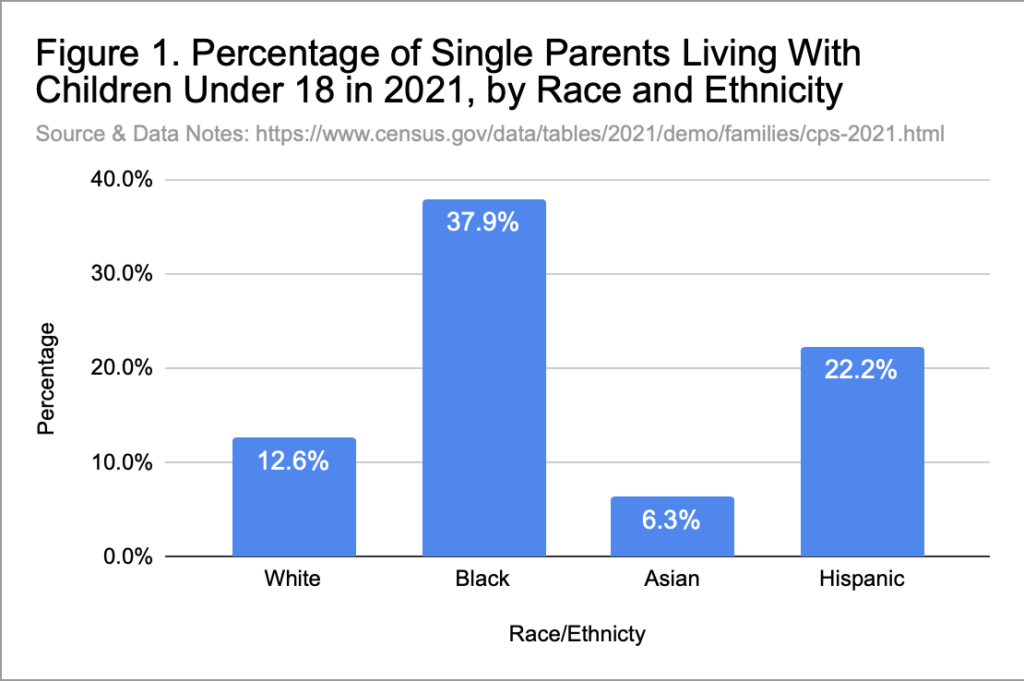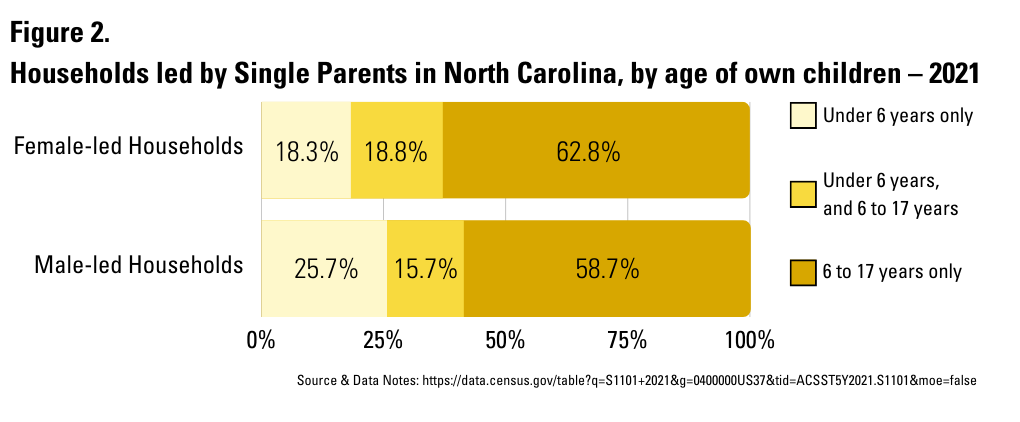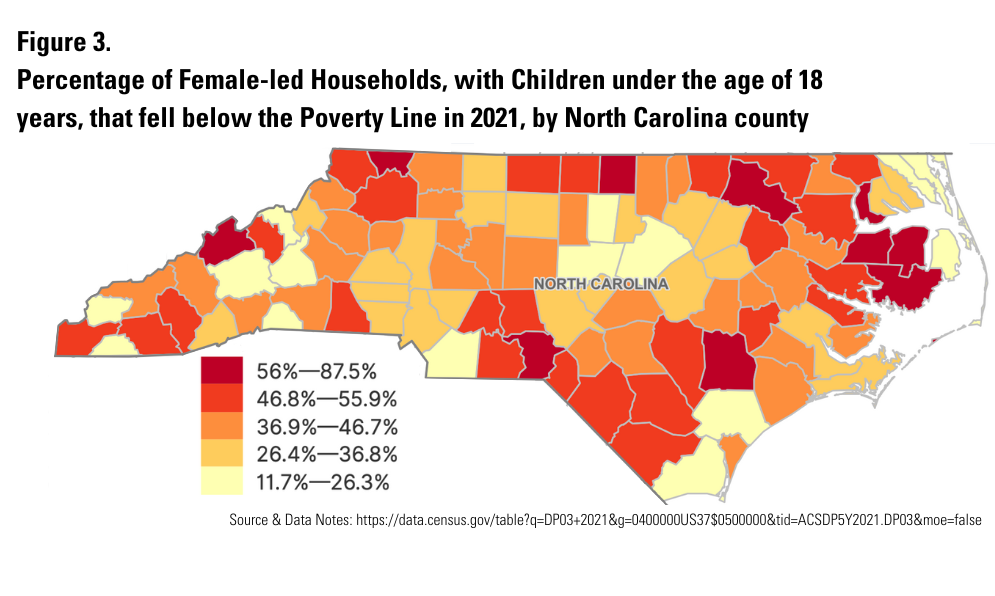The Employment of Parents and Caregivers of Young Children
Data Brief by Brodie Smith, IEI Policy Intern
Completed 1/23/2023
Who are Parents and Caregivers of Young Children?
Parents and caregivers of young children have to navigate the labor market while balancing their professional life with their family life. These individuals can be householders, spouses, single parents, other relatives and a multitude of other identities that may impact their household and chances of employment. As multiple points of data in this document come from the American Community Survey (ACS), it is important to recognize that the U.S. Census Bureau divides parents and caregivers into three different groupings, these being married-couple households, male householder with no spouse present and female householder with no spouse present. In the data found from the ACS, parents and caregivers are often described as those with their “own children” which refers to a child who is “a son or daughter by birth, marriage (a stepchild), or adoption.”
Highlights
- In 2021, approximately 1.1 million households in North Carolina had a child under the age of 18 years compared to 33.7 million nationwide.
- In 2021, the U.S. was home to about 10.7 million single-parent households with children under the age of 18 years, with these single parents having an unemployment rate of 8.3%.
- For single mothers with at least one child under the age of 3 years, the national unemployment rate in 2021 was 11.2%.
- Nationally, 20% of all parents have reported struggling to afford childcare in the past 12 months, with this rate jumping to 38% for lower income families.
- In 2021, 36.2% of single-mother households in North Carolina with children under the age of 18 years fell below the poverty line.
National Data on Parents and Caregivers of Young Children
As of 2021, there were approximately 33.7 million households across the United States where the householder had a child under the age of 18 years. Of these households, 68.3% (about 23 million) were married-couple, family households, with the remaining 31.7% (about 10.7 million) of these households being single parent households. Of the single parent households in the United States, 26.4% (about 2.8 million) were male-led households, with female-led households representing 73.6% (about 7.9 million), meaning that almost 3 out of every 4 single parents were women in 2021.
When it came to younger children, approximately 27.5 million parents lived with a child under the age of 6 years in their house. Of these parents, about 20.9 million were married with their spouse present and 3.3 million were single parents with no partner present. Of the single parents living with a child under the age of 6 years, about 409,000 were male and roughly 2.9 million were female. In 2021, there were about 7.7 million Black parents living with a child under the age of 18, with roughly 37.9% of these parents (about 2.9 million) having no partner present. To see how the percentage of single parents varies across racial and ethnic groups, view Figure 1.

North Carolina Data on Parents and Caregivers of Young Children
In 2021, North Carolina was home to approximately 1,074,770 households where the householder had a child under the age of 18 years. Married-couple, family households represented a great majority of this population, accounting for 66.7% (about 716,200) of these households. Coming in with the second largest population, female-led households with no spouse present accounted for 25.8% (about 272,300) of these households, with male-led households, no spouse present, making up 8% (about 86,300) of this population.
A closer examination of single parent households in North Carolina reveals that nearly 80% were female-led, similar to the national level. For both female-led and male-led households, the majority of caregivers had children between the ages of 6 and 17 years. To learn more about how single parent households vary when it comes to the age of their children, view Figure 2.

Being a parent or caregiver often means that an individual has a financial responsibility for their children as well as themselves. Because of this, it is important to examine the economic status of these individuals so that we may better understand their current situations. Data from the U.S. Census Bureau’s American Community Survey, allows us to understand the difference among caregivers whose income in the past 12 months fell below the poverty level in North Carolina. For example, 15.7% of all families with children under the age of 1 had incomes below the poverty level. This fell to 6.4% for married-couple families and jumped significantly to 36.2% for families with female householders with no spouse present, which is nearly six times higher than the married-couple family population.
County Data on Parents and Caregivers of Young Children
Of all the North Carolina households in 2021, approximately 30% of them are home to one or more people under the age of 18 years. Across North Carolina’s 100 counties, this percentage varies greatly from the lowest in Watauga County at 17.7% to the highest in Union County with 43.5%. The rest of the top five counties with the highest percentages of households with one or more children under the age of 18 years are Camden County (41.0%), Onslow County (38.0%), Johnston County (37.8%) and Cabarrus County (37.7%).
To examine the economic status of households across North Carolina’s counties in 2021, we know that family households in rural counties are more likely to fall below the poverty line compared to their non-rural counterparts. The county with the highest percentage of family households below the poverty line in 2021 was Hyde County at 54.9%, meaning over half of the family households in Hyde County were impoverished in 2021. Martin County had the highest percentage of married-couple householders at 24.6%. For family households with female householders, no spouse present, the county with the highest percentage was Hyde County at 87.5%, meaning almost 9 out of every 10 households with female, single-parent householders are below the poverty line. To get a better understanding of how family households with female householders, no spouse present, view the map in Figure 3.

Employment Data on Parents and Caregivers of Young Children
The labor force participation rate, which includes those currently working and unemployed individuals actively looking for work, for parents with children under the age of 18 years varies greatly between fathers and mothers. In 2021, the labor force participation rate of all fathers with children under the age of 18 years was 92.5%, and 71.2% for all mothers with children under the age of 18. In single-parent maintained families, fathers had a participation rate of 87.0% and mothers with 75.3%. To look primarily at mothers with children under the age of 3 years, we see that the participation rate for these individuals was 63.1%, with an unemployment rate of 5.9%. For those mothers who are married, the participation rate becomes 62.6% and the unemployment rate lowers to 3.6%. Single mothers in this population had a similar participation rate of 64.2%, but then the unemployment rate nearly tripled from the married mothers to 11.2%.
According to the 2021 report on family employment characteristics from the U.S. Bureau of Labor Statistics, 10.9% of all families with children under the age of 18 years had no parents employed, about 3,558,000 families with no parents actively working. Of these families, 78.0% were families maintained by a single parent (2,774,000 families). Single-parent householders had an unemployment rate of 8.3%, and in female-led households, 28.8% (2,280,000 families) had mothers who were not employed, compared to 18.3% for male-led households (494,000 families). When it comes to children under the age of six years, families with unemployed, single mothers jumped to 35.9% (1,086,000 families), and families with unemployed, single fathers dropped slightly to 16.8% (185,000 families).
There are also significant gender differences among employed parents. In February 2022, only 52.3% of all mothers worked full-time, compared to the 84.0% of fathers. The percentage of mothers who worked part-time jobs was nearly four times that of fathers (12.3% vs. 3.2%, respectively).

Barriers to Employment
Balancing one’s professional life with their family responsibilities can be difficult. One of the toughest difficulties faced by parents in the workforce is access to quality and affordable childcare. In a survey conducted by McKinsey & Company in early 2022, 34% of mothers and 20% of fathers left the workforce due to obstacles regarding child care expenses and availability. According to the Pew Research Center, 20% of all parents in the United States have struggled to afford childcare in the past 12 months, with this rate increasing drastically to 38% for lower income families. Additionally, 45% of lower-income working parents said they would be extremely or very worried about losing pay if they needed to take time off to care for their child.
Other notable barriers to employment for parents and caregivers of you young children include, but are not limited to:
- Lack of full-time work experience
- Access to reliable transportation
- Experiencing burnout and elevated stress
- Child having a limiting health condition
Policies and Programs Supporting Parents and Caregivers of Young Children
Across the United States and North Carolina, there are a plethora of policies and no shortage of programs designed to support parents and caregivers with young children. These resources vary across multiple support areas, including some that are focused on the employment of these individuals. To read more about the policies and programs for parents and caregivers of young children, check them out below:
The Child Tax Credit (CTC)
The Child Tax Credit is a federal program designed to help alleviate financial struggles that working parents and caregivers may face. Under the American Rescue Plan, the CTC was expanded for 2021 to temporarily increase the amount that families may receive towards lowering the amount they owe in federal taxes. For couple-led households making less than $150,000 a year or single parent households making less than $112,500 a year, the CTC is a way to support families financially as they balance the responsibilities of raising children and working in a job.
The Family and Medical Leave Act (FMLA)
The Family and Medical Leave Act entitles employees of covered employers to take job-protected, unpaid leave for family and medical reasons. This policy allows those who may need to take time off for certain medical procedures for family or personal care, and then return back to work once the leave has ended. For parents and caregivers who may be worried about taking time off of work, this policy protects these individuals so that they may set aside time to properly take care of their children’s medical needs while maintaining their employment status.
Work First Family Assistance
Temporary Assistance for Needy Families (TANF) is a federal assistance program of the United States. Administered by the North Carolina Department of Health and Human Services, the TANF program is implemented through the Work First program, and is based on the premise that parents have a responsibility to support themselves and their children. Work First provides parents and caregivers with short-term training and other services to help them become employed and move toward self-sufficiency. Through their three strategies centered around Diversion, Work, and Retention, Work First provides householders the resources needed to support both themselves and their children.
The Child Care Subsidy Assistance Program
Through a combination of state and federal funds, North Carolina’s Division of Child Development provides subsidized child care services to eligible, low-income families. This program covers children up to the age of 5 years, with school-age children ages 5-12 able to receive care outside of school hours. To qualify, parents must have one or more of the following situations: actively working or attempting to find work, in school or job training program, child is receiving child protective services, child has developmental needs, their family is experiencing a crisis, with the family’s income and the cost of the child care provided also playing a factor in eligibility. With access to affordable child care being one of the most prominent employment barriers for parents and caregivers, the Child Care Subsidy Assistance Program enables families to overcome that obstacle.
Success in Action
Family Forward NC is an initiative under the North Carolina Early Childhood Foundation geared towards improving children’s health and well-being and keeping North Carolina’s businesses competitive. To do this, Family Forward NC has implemented a certification program in which businesses and employers can be verified as having a family-friendly workplace that fosters happy and healthy employees. To achieve certification, employers must show that they offer best-practice policies in one or more of the following areas: paid leave and wages, accommodations for pregnant and breastfeeding workers, child care, health and wellness benefits, and scheduling practices.
Men and Women United for Youth and Families is a nonprofit community organization centered around promoting education, resource awareness and providing services to assist in the creation of self-sufficient families in Bladen, Brunswick and Columbus Counties, NC. This organization has and continues to support parents and caregivers in their community through connecting them to the Tri-County Job Center and by providing free GED preparation classes, free computer skills and career development courses for unemployed individuals, and their Moving Forward Program (MFP), which provides a holistic approach to career readiness.
SAS Analytics, a global software company headquartered in Cary, NC, is committed to supporting all of their employees, as well as their families. SAS supports parents through numerous benefits programs that allow parents and caregivers to place a focus on their children while also being diligent in their work. Some of these benefits include subsidized, on-site child care centers, parental and caregiver leave, on-site summer camp for school-age children, family medical leave and sick days, and multiple other benefits and resources that work to alleviate the stress of balancing parental responsibilities with one’s professional career.
- Categories:


